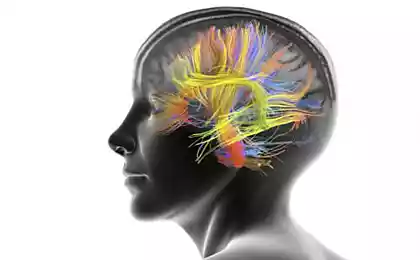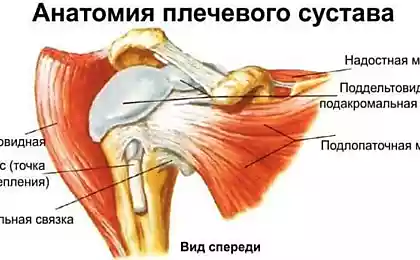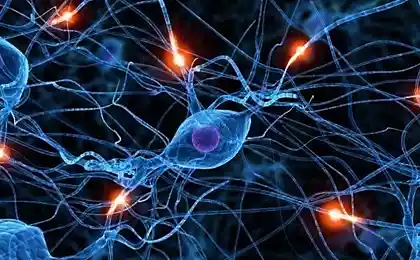474
10 exercises for the brain, which stimulate the development of new nerve connections
Neyrobika psychological exercise resembling a cross-fitness for the brain. In these exercises involve our 5 senses: sight, hearing, smell, taste, touch. Their systematic execution stimulates the development of new neural connections in different areas of the brain, making nerve cells more robust, helps produce nutrients that improve memory.
We are happy to share these simple exercises. Making them in the morning, after a while you will feel a positive effect.

1. Brush your teeth with a broken arm
Studies have shown that the use of the opposite hemisphere of your brain (as in this exercise) gives the results of a rapid and substantial expansion of the areas of the cerebral cortex.
How to do: brush your teeth a broken arm, and don't forget to open and use a tube of toothpaste with the same hand.
2. Take a shower with your eyes closed
Tactile sensations stimulate other areas of the brain. Your hands notice what you cannot see, and it is about sending signals to your brain.
How to do: try using one of the sense organs only sense of touch (do everything very carefully to avoid injury). Open the taps and adjust the water, trusting their feelings. Then wash with your eyes closed.
3. Change your usual morning routine
Studies of the brain show that the new tasks increase the area of the cerebral cortex, recording an increase in the level of brain activity.
How to do: get dressed after Breakfast, take a walk with the dog in a new area, change to your favorite channel on TV or the radio.
4. Turn familiar objects upside down. Literally
When you look at things properly rotated, your left "verbal" side of the brain can quickly recognize and immediately sends your attention elsewhere. When you turn them upside down, your right side of the brain kicks in and attempts to recognize the shape, color and attitude of his incomprehensible pictures.
How to do: flip the upside down pictures of your family, a wall clock and calendar.
5. Switch places at the table
In most families everyone has his own place at the table, but your brain constantly needs new experiences.
How to do: switch places to change the position that you occupy, and in another way to look at the room, and people, and even how you touch the pepper and salt.

6. Breathe new flavors
You probably don't even remember how "learned" that the smell of coffee is associated with a beginning of a new day. You can use the new neural pathways it is possible, linking the unusual flavors, e.g., vanilla, cinnamon, mint, any kind of activity.
How to do: keep the extract for your favorite flavor next to my bed all week. Open and inhale it as soon as I woke up, then when I wash and dress.
7. Open the car window
The hippocampus — the part of the brain responsible for memories. They will be brighter, if they involve smells, sounds, and images.
How to do: try to recognize the new sounds and smells on your way. Open window will help you with this.
8. Study the products in the supermarket
The stores are designed to the most profitable goods were located at eye level, so when you buy food, you can't see much.
How to do: to stop at any row in the store and look at the shelves from top to bottom. If you saw something I didn't notice it before, take this, read a part and think about it. You don't have to buy it, you already broke your routine and gained new experience.
9. Increase the number of communications during the day
Research has repeatedly shown that lack of communication has serious negative impact on General cognitive abilities.
How to do: want to drink? It is better to buy a drink from the seller in the store than a soda machine. Ran out of gas? Better pay cheque at the cashier than the card in the terminal at the street.
14 TED lectures for those who suffer from fatigue and creative burnout
Very curious. Russian catch phrase: the secret meaning
10. Read different
We use different parts of the brain when we read or listen to themselves when reading aloud or silently.
How to do: read aloud to your partner, alternating roles of listener and reader. Perhaps you are much longer you read the book, but will spend more time together.published
Source: narnis.com/10-%D1%81%D1%82%D1%80%D0%B0%D0%BD%D0%BD%D1%8B%D1%85-%D1%83%D0%BF%D1%80%D0%B0%D0%B6%D0%BD%D0%B5%D0%BD%D0%B8%D0%B9-%D0%B4%D0%BB%D1%8F-%D0%BC%D0%BE%D0%B7%D0%B3%D0%B0-%D0%BA%D0%BE%D1%82%D0%BE%D1%80%D1%8B/
We are happy to share these simple exercises. Making them in the morning, after a while you will feel a positive effect.

1. Brush your teeth with a broken arm
Studies have shown that the use of the opposite hemisphere of your brain (as in this exercise) gives the results of a rapid and substantial expansion of the areas of the cerebral cortex.
How to do: brush your teeth a broken arm, and don't forget to open and use a tube of toothpaste with the same hand.
2. Take a shower with your eyes closed
Tactile sensations stimulate other areas of the brain. Your hands notice what you cannot see, and it is about sending signals to your brain.
How to do: try using one of the sense organs only sense of touch (do everything very carefully to avoid injury). Open the taps and adjust the water, trusting their feelings. Then wash with your eyes closed.
3. Change your usual morning routine
Studies of the brain show that the new tasks increase the area of the cerebral cortex, recording an increase in the level of brain activity.
How to do: get dressed after Breakfast, take a walk with the dog in a new area, change to your favorite channel on TV or the radio.
4. Turn familiar objects upside down. Literally
When you look at things properly rotated, your left "verbal" side of the brain can quickly recognize and immediately sends your attention elsewhere. When you turn them upside down, your right side of the brain kicks in and attempts to recognize the shape, color and attitude of his incomprehensible pictures.
How to do: flip the upside down pictures of your family, a wall clock and calendar.
5. Switch places at the table
In most families everyone has his own place at the table, but your brain constantly needs new experiences.
How to do: switch places to change the position that you occupy, and in another way to look at the room, and people, and even how you touch the pepper and salt.

6. Breathe new flavors
You probably don't even remember how "learned" that the smell of coffee is associated with a beginning of a new day. You can use the new neural pathways it is possible, linking the unusual flavors, e.g., vanilla, cinnamon, mint, any kind of activity.
How to do: keep the extract for your favorite flavor next to my bed all week. Open and inhale it as soon as I woke up, then when I wash and dress.
7. Open the car window
The hippocampus — the part of the brain responsible for memories. They will be brighter, if they involve smells, sounds, and images.
How to do: try to recognize the new sounds and smells on your way. Open window will help you with this.
8. Study the products in the supermarket
The stores are designed to the most profitable goods were located at eye level, so when you buy food, you can't see much.
How to do: to stop at any row in the store and look at the shelves from top to bottom. If you saw something I didn't notice it before, take this, read a part and think about it. You don't have to buy it, you already broke your routine and gained new experience.
9. Increase the number of communications during the day
Research has repeatedly shown that lack of communication has serious negative impact on General cognitive abilities.
How to do: want to drink? It is better to buy a drink from the seller in the store than a soda machine. Ran out of gas? Better pay cheque at the cashier than the card in the terminal at the street.
14 TED lectures for those who suffer from fatigue and creative burnout
Very curious. Russian catch phrase: the secret meaning
10. Read different
We use different parts of the brain when we read or listen to themselves when reading aloud or silently.
How to do: read aloud to your partner, alternating roles of listener and reader. Perhaps you are much longer you read the book, but will spend more time together.published
Source: narnis.com/10-%D1%81%D1%82%D1%80%D0%B0%D0%BD%D0%BD%D1%8B%D1%85-%D1%83%D0%BF%D1%80%D0%B0%D0%B6%D0%BD%D0%B5%D0%BD%D0%B8%D0%B9-%D0%B4%D0%BB%D1%8F-%D0%BC%D0%BE%D0%B7%D0%B3%D0%B0-%D0%BA%D0%BE%D1%82%D0%BE%D1%80%D1%8B/























